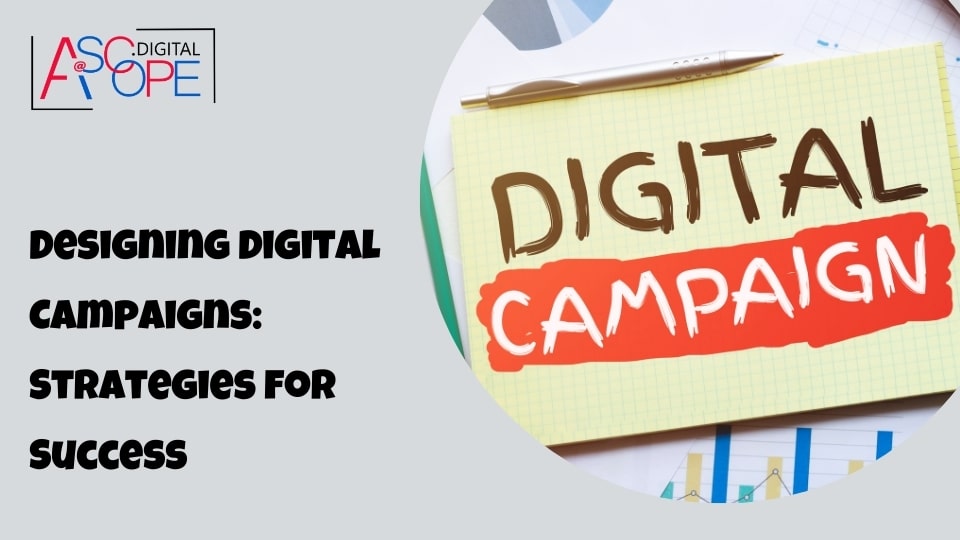In today’s digital age, the success of any business largely depends on its online presence and the effectiveness of its digital campaigns. Graphic design plays a pivotal role in the creation and execution of these campaigns. This article delves into the strategies that can help you design successful digital campaigns, with a particular focus on advertising design.
Understanding Your Audience
The first step in designing an effective digital campaign is understanding your audience. Knowing who your target audience is will help you tailor your message to meet their needs and preferences. Conduct thorough market research to gather data on your audience’s demographics, interests, and online behavior. Use tools like Google Analytics, social media insights, and surveys to collect this information.
Setting Clear Goals
Before diving into the design process, it’s essential to set clear, measurable goals for your campaign. What do you want to achieve? Are you looking to increase brand awareness, generate leads, boost sales, or improve customer engagement? Setting specific goals will provide direction for your campaign and help you measure its success.
Creating Compelling Visuals
Visuals are the backbone of any digital campaign. They grab attention, convey messages quickly, and leave a lasting impression. To create compelling visuals, follow these key principles:
- Simplicity: Keep your designs clean and clutter-free. Too much information can overwhelm viewers and dilute your message.
- Consistency: Use consistent colors, fonts, and styles across all your campaign materials to build a cohesive brand identity.
- Relevance: Ensure your visuals are relevant to your target audience and align with your campaign goals.
- Emotion: Tap into emotions to create a strong connection with your audience. Use imagery and color schemes that evoke the desired feelings.
Crafting Engaging Content

Alongside visuals, the content of your digital campaign is crucial. Your content should be engaging, informative, and persuasive. Here are some tips for crafting effective content:
- Headlines: Write attention-grabbing headlines that clearly convey the benefit of your campaign.
- Value Proposition: Highlight the unique value your product or service offers. Explain how it solves a problem or improves the lives of your audience.
- Call to Action (CTA): Include a clear and compelling CTA that guides your audience on what to do next, whether it’s making a purchase, signing up for a newsletter, or downloading an ebook.
- Storytelling: Use storytelling techniques to make your content more relatable and memorable. Share success stories, testimonials, or case studies that illustrate the benefits of your offering.
Utilizing Multiple Channels
To maximize the reach and impact of your digital campaign, leverage multiple channels. Each platform has its strengths and can help you connect with different segments of your audience. Consider the following channels:
- Social Media: Platforms like Facebook, Instagram, Twitter, and LinkedIn are excellent for reaching a broad audience and engaging with them in real-time.
- Email Marketing: Email campaigns can be highly targeted and personalized, making them effective for nurturing leads and driving conversions.
- Content Marketing: Create valuable content such as blog posts, videos, and infographics to attract and engage your audience. Optimize your content for search engines to improve visibility.
- Paid Advertising: Invest in paid ads on platforms like Google Ads, Facebook Ads, and Instagram Ads to reach a larger audience and drive traffic to your website.
Measuring and Analyzing Performance
Once your campaign is live, it’s crucial to monitor its performance and make data-driven decisions to optimize it. Use analytics tools to track key metrics such as impressions, clicks, conversions, and ROI. Regularly review these metrics to identify what’s working and what’s not. Adjust your strategies accordingly to improve the effectiveness of your campaign.
Adapting to Trends and Technologies
The digital landscape is constantly evolving, with new trends and technologies emerging regularly. To stay ahead of the competition, it’s essential to keep up with these changes and adapt your strategies accordingly. Here are some trends to watch:
- Video Content: Video continues to dominate online content consumption. Incorporate video into your campaigns to capture attention and convey your message effectively.
- Interactive Content: Engage your audience with interactive content such as quizzes, polls, and interactive infographics. This type of content encourages participation and can lead to higher engagement rates.
- Artificial Intelligence (AI): Use AI-powered tools to personalize your campaigns, analyze data, and automate tasks. AI can help you deliver more relevant and timely messages to your audience.
- Voice Search: With the rise of voice-activated devices, optimizing your content for voice search is becoming increasingly important. Focus on natural language and long-tail keywords to improve your visibility in voice search results.
Enhancing User Experience (UX)

A seamless user experience is critical for the success of your digital campaigns. Ensure that your website and landing pages are user-friendly, responsive, and fast-loading. Pay attention to the following aspects of UX:
- Navigation: Make it easy for users to find the information they need. Use clear menus, intuitive navigation, and prominent CTAs.
- Design: Use a clean and visually appealing design that aligns with your brand identity. Avoid clutter and distractions that can detract from your message.
- Mobile Optimization: With more people accessing the internet on mobile devices, ensure that your website is fully optimized for mobile viewing. This includes responsive design, fast loading times, and easy-to-use interfaces.
- Accessibility: Make your website accessible to all users, including those with disabilities. Use alt text for images, provide transcripts for videos, and ensure your site meets accessibility standards.
Leveraging Social Proof
Social proof is a powerful tool for building trust and credibility with your audience. Incorporate elements of social proof into your digital campaigns to enhance their effectiveness. This can include:
- Testimonials: Share positive feedback and testimonials from satisfied customers.
- Case Studies: Highlight success stories that demonstrate the value of your product or service.
- Reviews and Ratings: Display customer reviews and ratings on your website and social media pages.
- Influencer Endorsements: Partner with influencers in your industry to promote your brand and reach a larger audience.
Personalization
Personalization is key to delivering relevant and engaging experiences to your audience. Use data and insights to tailor your messages and offers to individual preferences and behaviors. Here are some ways to personalize your digital campaigns:
- Segmentation: Divide your audience into segments based on demographics, interests, and behaviors. Create tailored messages and offers for each segment.
- Dynamic Content: Use dynamic content to display different messages and visuals to different audience segments. This can include personalized recommendations, offers, and CTAs.
- Behavioral Targeting: Use behavioral data to target users based on their actions and interactions with your brand. For example, retarget users who have visited your website but haven’t made a purchase with personalized ads.
A/B Testing

A/B testing is a valuable technique for optimizing your digital campaigns. By testing different versions of your content, visuals, and CTAs, you can identify what resonates best with your audience. Here are some elements to test:
- Headlines: Test different headlines to see which one grabs the most attention.
- Images and Videos: Experiment with different visuals to determine which ones perform best.
- CTAs: Test different CTAs to see which ones drive the most conversions.
- Landing Pages: Create multiple versions of your landing pages to identify the most effective design and content.
Integrating Offline and Online Campaigns
While digital campaigns are essential, integrating them with offline efforts can amplify their impact. A cohesive approach that combines both online and offline strategies can help you reach a broader audience and create a more unified brand experience. Here are some ways to integrate your campaigns:
- Cross-Promotion: Promote your digital campaigns through offline channels such as print ads, direct mail, and in-store promotions.
- Consistent Messaging: Ensure that your messaging is consistent across all channels, both online and offline.
- Event Marketing: Use events, trade shows, and conferences to promote your digital campaigns and engage with your audience in person.
- QR Codes: Incorporate QR codes into your offline materials to drive traffic to your online campaigns and track engagement.
Conclusion
Designing successful digital campaigns requires a strategic approach that combines compelling visuals, engaging content, and effective use of multiple channels. By understanding your audience, setting clear goals, and continuously measuring and optimizing your efforts, you can create campaigns that drive traffic, boost sales, and enhance your brand’s online presence.
Thus, improving traffic and sales for your website. Read more on the other reasons why your website isn’t getting traffic. By staying up-to-date with the latest trends and technologies, personalizing your messages, and integrating offline and online efforts, you can ensure that your digital campaigns stand out in a crowded marketplace and deliver the desired results


